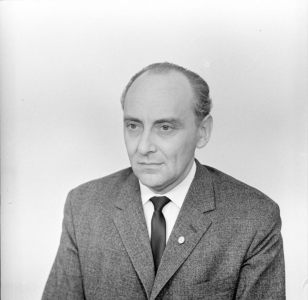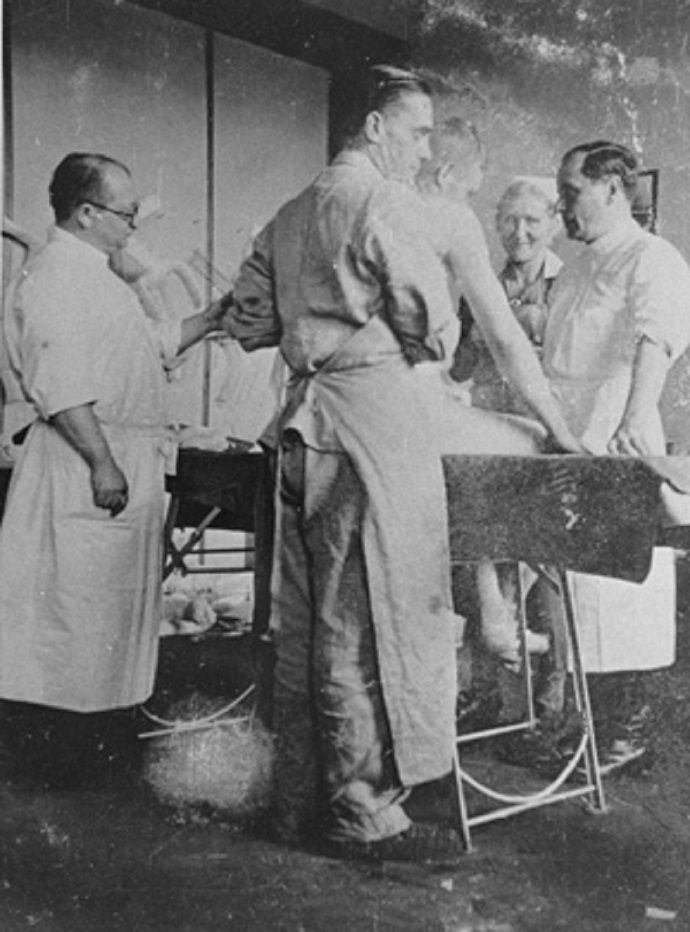In December 1942, the leader of my block announced that all men aged 18 to 30 were not going to work on the following day. Instead, as per the delivered list, they were supposed to go for an obligatory x-ray. (…) On that day, when a group of 60 people were escorted to Block No. 31, they began to run us through x-ray machines in pairs. Prior to that, we were fully undressed. There was a level board installed in the machine, which was hitched up to the level of your sexual organs, and you needed to put your scrotum on it. Later they irradiated you with a large electric lamp, while you were standing, holding your hands on the small of your back.
The procedure took from 5 to 7 minute per person. I felt no pain during the irradiation.
After we were all x-rayed, or – as the physicians called it – after sterilisation, we were sent to the work we did prior to that. (…) Eight months later, after the sterilisation, everyone who was subjected to it, was sent to the Auschwitz branch, to Block No. 28 – the camp’s hospital ‘Oświęcim’, (…) Where everyone was individually interrogated by a German physician in the rank of a captain (I don’t know his family name), dressed in an pilot uniform. (…) During the interrogation, the captain asked me if I often had erections, whether I had wet dreams, and also a lot of other questions, which I don’t remember. (…) After the interrogation and the experiment, myself and others were sent to the surgical ward of the hospital, to Block No. 21.
Two days later, myself and my colleague Szlemowicz were taken to the operating theatre. (…) I was laid on one table and Szlemowicz on the other; I had an injection into my loins, and the operation started. (…) My surgery (castration) was conducted by Dr Dering, and Szlemowicz’s by Grabczyński. On that day, the whole group – eight people – had the left testicles removed, and later we were all hospitalised in Room No. 4, and had the surgery wound treated for 14 days. When we were healed, I was discharged to the camp and sent to work in Block No. 7a, the bricklayer school. Six months after the first surgery, I and the others had the second one performed, that is I had my other testicle removed. The second surgery was conducted on me by Dr Grabczyński.


